What is Yumi the Japanese bow?
The bow is a tool made to shoot targets at a distance with arrows, utilizing the elasticity of materials like wood and bamboo. A bow consists of the main body, the "bowstave," and the "string." When explaining in combination with arrows, it is called a "bow and arrow". In Japan, it has evolved from a hunting tool to a weapon and then to a ceremonial tool. This article explains mainly about the history, types, and structure of bows in Japan.
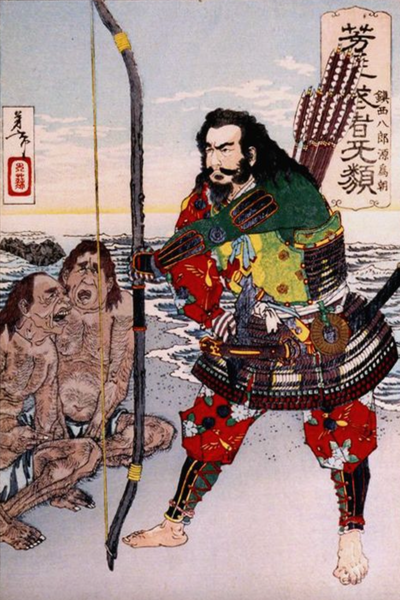
Table of Content
History of the Yumi Japanese bow 弓
The history of the yumi can be traced back to Stone age, and its uses changes from hunting tool, to weapon, to ceremonial tools. We'll explain the history of the bow according to its uses.
Yumi as a Hunting Tool
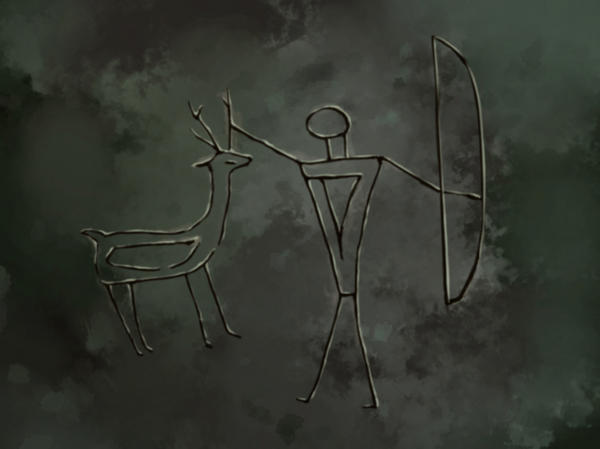
It is said that humans began using bows about 20,000 years ago (the Late Paleolithic period), and they were born as hunting tools in various parts of the world, not just Japan. By shaping elastic wood or bamboo into a long thin piece and stretching a string between the ends, a bow is made. By attaching a sharpened bone or stone to the tip of a wooden or bamboo stick and shooting it as an arrow, prey at a distance beyond reach could be caught.
In Japan, bows coated with lacquer were already used during the Jomon period 縄文時代, and obsidian was used for arrowheads. Also, hunting scenes with bows were draw on bronze bells made during the Yayoi period 弥生時代.
Yumi as a Weapon
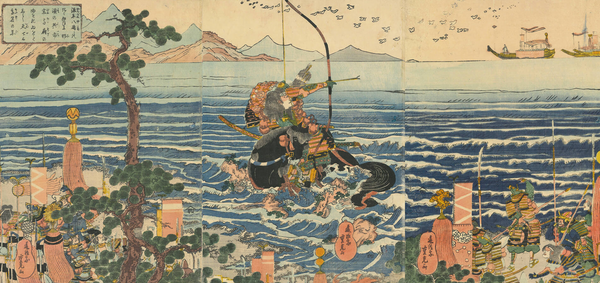
The bow evolved from a hunting tool to a weapon. This was due to the increase in population, the emergence of wealth disparities, and the occurrence of wars from power struggles. The shape of the bow that Japanese people used as a weapon is described in detail in the "Wei Zhi Dongyi Biography Wa People" section of the Chinese historical book "Three Kingdoms" from the 3rd century.
The wooden bow has a short lower part from the grip and a long upper part, indicating that the bow of that time had a similar shape to today's bow. The body of the arrow was bamboo, and iron or bone was used for the arrowhead. Even after Tanegashima guns were introduced, bows continued to be valued as one of the major weapons along with katana swords and spears (yari), seemingly due to their ease of creation and cost-effectiveness.
In Japan, battles usually started with long-distance combat with bows, and as the distance closed, they switched to close combat with spears and swords. A samurai in battlefield, is usually fully armed with samurai armor, their primary weapon usually is long bow, spear, and katana (could be tachi or Uchigatana). In the samurai society, the training of the bow was valued along with horse riding, are described by the term "the way of the bow and horse".
Yumi as a Ceremonial Tool
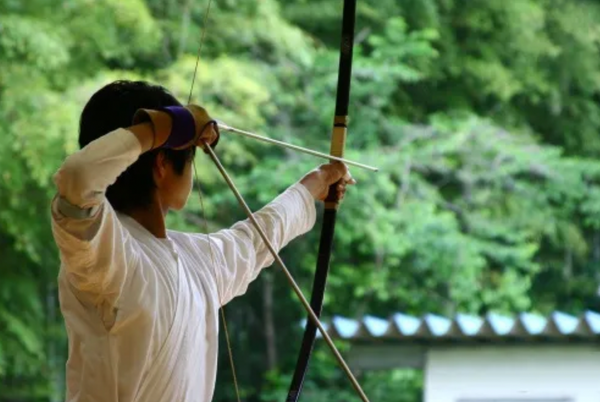
Ancient Japan was strongly influenced by China culturally, and bows, which were used as ceremonial tools on the Chinese mainland, came to have sacred and magical connotations in Japan. The act of shooting a distant target without moving a step from one's position with a bow and arrow must have seemed divine at times.
The "shooting ceremony", a representative ritual of the bow, is a China-originated event that was established as a New Year's court event from the early Heian period. In ancient Japan, it was believed that evil spirits (demons) arose at the change of seasons (seasonal festivals), so bows and arrows, which have sacred connotations, were used as lucky charms to ward them off.
For example, the "ceremony of the resonant string" uses only a bow, and the string is strongly plucked to make a sound that drives away demons. There are also rituals such as "exorcism" that use bows and arrows to drive away demons, which can be seen all over the place. Even today, "demon-breaking arrows" that can be obtained at temples and shrines during the New Year, or "demon-breaking bows" that are given on the first New Year after the birth of a boy, are familiar to Japanese people as ceremonial bows.
Major Types of Yumi
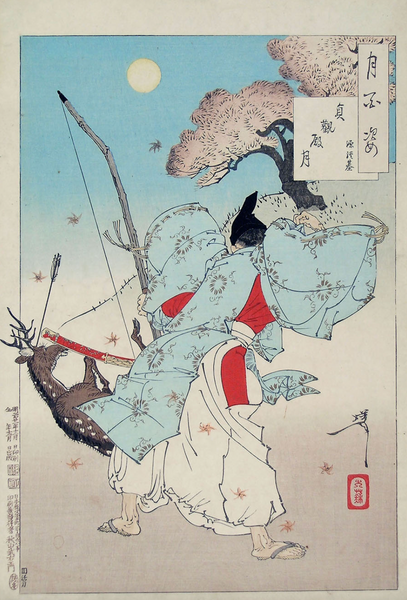
Based on their size:
Yumi 和弓 (Japanese Bow)
As the name suggests, Yumi is a term used in contrast to the Western bow (archery). The first feature is its length. The length of a Yumi is among the longest in the world, with the standard being 221 cm (approximately 7 feet 3 inches). Another feature is that it is held and used lower than the center of the bow. From ancient times, the Yumi was called a "Ooyumi" (大弓 large bow) and there existed bows of various lengths such as "Hankyu" (half-bow) which was around 6 feet, but it is believed that this length was preferred by the samurai because it had the most power and it remains so until today.
Koyumi 小弓 (Small Bow)
Koyumi refers to small bows made mainly for recreational use. During the Heian period, Koyumi was used as an indoor game by nobles. There were also even smaller bows for children called "Suzume Koyumi". Another type of recreational small bow is the "Yanagi Yumi" made from willow, with a length of about 85 cm (approximately 2 feet 8 inches).
Based on their material:
The Maruki Yumi (丸木弓) was a primitive bow made directly from tree branches, used up until around the Nara period. Its structure was simplistic: both ends of the branch were whittled down to attach the bowstring, reflecting a basic and unrefined design.
Since the material was solely tree branches, the power of the bow depended entirely on the elasticity of the wood, resulting in limited force and range.
To enhance the bow's power, woods with relatively higher elasticity were preferred. Materials such as Azusa (梓), Mayumi (檀), and Tsuge (柘) were commonly used for their superior flexibility and resilience. These choices represented an early effort to improve the effectiveness of bows within the constraints of available materials and technology of the time.
Fusetake Yumi (伏竹弓, Fusetake bow)
Towards the end of the Heian period, the Fusetake Bow emerged, innovating upon the Maruki Yumi. This design involved flattening the exterior side of the roundwood bow and laminating split bamboo onto it using Nibe (にべ: fish-derived glue).
This alteration made the bow shaft less prone to breaking while leveraging the elasticity of bamboo to ease the drawing process, thereby enabling arrows to be shot over longer distances. Subsequent refinements were made to the Fusetake Bow, enhancing its ease of use and increasing its power. This evolution in bow design represents a significant advancement in the technology and effectiveness of Japanese archery equipment during that era.
Sanmai Uchi no Yumi (三枚打弓 Three-Piece Laminated Bow )
The Three-Piece Laminated Bow is an evolution of the Fusetake Bow. While the Fusetake Bow features bamboo laminated only on the front side, the Three-Piece Laminated Bow also has bamboo applied to the backside, creating a sandwich-like structure with bamboo layers. This type of bow is known as "Sanmai Uchi no Yumi" and first appeared during the Kamakura period. This advancement signifies a notable step in the development of Japanese bow-making, enhancing both the strength and flexibility of the bows used in this era.
Shihōdake no Yumi ( 四方竹弓 Four-Sided Bamboo Bow )
The Four-Sided Bamboo Bow is a further refinement of the Three-Piece Laminated Bow. In addition to the laminations on the front and back, bamboo is also applied to the sides of the bow. This design, known as "Shihōdake no Yumi," was developed to allow arrows to be shot over greater distances. This type of bow emerged during the Muromachi period, representing an innovative advancement in Japanese archery, focusing on enhancing range and power.
Awase Yumi 合弓 ( Composite Bow )
The composite bow, or "Awase Yumi," is a type of bow primarily made of wood, with bamboo laminated on the exterior. The elasticity of bamboo, combined with wood, enhanced its power, making it more durable than the Maruki Yumi. This design laid the foundation for the later development of the Higo Yumi, a prototype of modern competitive bows.
Tō Yumi 籐弓 (Rattan Bow)
The rattan bow, or "Tō Yumi," involves winding rattan (籐, tō: a type of palm) around the bow. By wrapping the bow with rattan, the bond between bamboo and wood is reinforced, further increasing its power. A notable example is the "Shigetō Yumi" (重籐弓), one of the largest bows in the world, reaching lengths of up to 2 meters. It boasts a maximum range of about 400 meters, with an effective shooting distance (the range at which it can inflict lethal damage on an enemy) of approximately 80 meters.
The Higo Yumi (弓胎弓) is a type of composite bow primarily constructed using bamboo for most of its components. This bow exhibits superior durability and elasticity compared to traditional bows. The inclusion of bamboo in the core part, known as the "shin" (芯), significantly enhanced its power.
It is often said that the Higo Yumi laid the groundwork for the materials and structure of bows used in modern Kyudo (Japanese archery). Alongside the development of the Higo Yumi, the prototype of the glove-like archery equipment used to pull the bowstring, known as "Yugake" (弽), was also created. This evolution marks a significant advancement in the design and functionality of Japanese bows, influencing the practice of archery as it is known today.
Yumi Structure
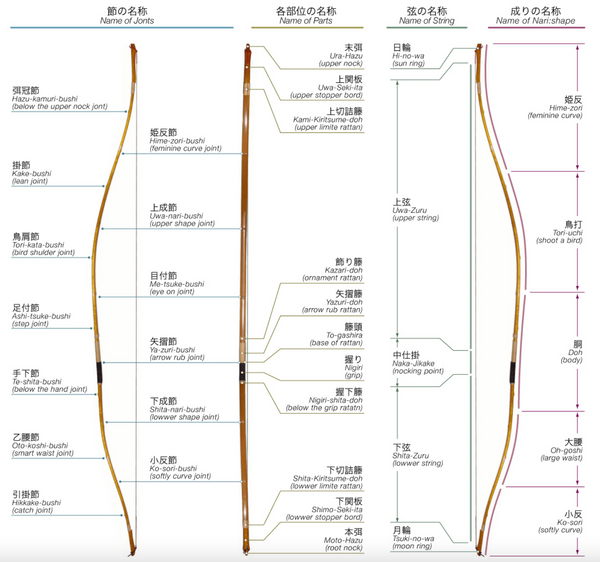
The basic structure of the Yumi consist of stave and the string, and the shape of the bow is called "Nari 成り". Please note that the names introduced below are general terms. They may differ depending on the region, school, and materials of the bow.
Yugara (弓幹 Bow Stave )
The main body of the bow is the bow stave. The side facing the string is called the belly (Yuhara), and the opposite side is called the back. The typical names of each part of the bow stave are as follows:
Urahazu (末弭 end nock): This is at the very top of the bow stave, where the string loop is attached.
Uwasekiita (上関板 upper faceplate): The belly part below the Urahazu.
Togashira (籐頭): The place where the grip and the rattan wrapped around the upper part meet.
Nigiri (握り grip): The part of the bow you hold when shooting an arrow. Also known as Yuzuka (bow handle).
Shimosekiita (下関板 lower faceplate): The belly part above the Motohazu.
Motohazu (本弭 bottom nock): This is at the very bottom of the bow stave, where the string loop is attached.
String (弦 Tsuru) : The string is made from materials that are elastic and durable even when shaped into a thin thread. In the old days, animal skins, intestines, and plant hemp were the main materials.
Tsuruwa (弦輪 String loop): A loop-shaped string to attach to the Urahazu or
Motohazu (上弦 Upper string): The string above the Nakajikake.
Nakajikake (中仕掛): The part where the arrow is set and pulled back. It is adjusted to fit the groove made on the end of the arrow.
Kagen (下弦 Lower string) : The string below the Nakajikake.
Nari (成り shape):Nari refers to the shape of the bow. The bow has names for the curved parts, which reflect the features of the bow.
Himegaeri (姫反): The curved part at the upper part of the bow.
Toriuchi (鳥打): The part with the most curve, below the Himegaeri.
Dou (胴): The gradual part from the Toriuchi to the lower part of the grip.
Oikoshi (大腰): The curved part from the Dou to the Kogaeri.
Kogaeri. (小反): The curved part at the lower part of the bow.
Difference between Yumi Japanese bow and Western Bow
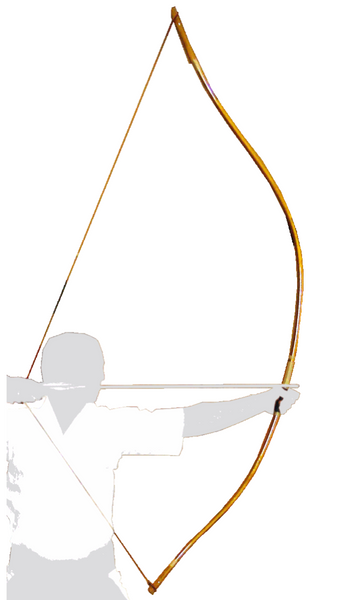
Japanese bows (Yumi) and Western bows (Archery), while seemingly similar, are fundamentally distinct in design and usage. Japanese bows are characterized by an asymmetrical design with a grip located about a third from the bottom, facilitating greater propulsion with minimal force. In contrast, Western bows feature a symmetrical arc and are held near the center, indicating a design evolution focused on accuracy.
In terms of usage, the asymmetry in Japanese bows influences the arrow's flight, often veering upward or to the right for beginners. Kyudo archers draw the string back to behind the ear and place the arrow on the right side to avoid contact with the ear or cheek. Western archery, however, involves drawing the arrow to the chin and shooting through a central hole, allowing for straightforward aiming. Additionally, Western archery incorporates various auxiliary tools like sights, stabilizers, and clickers to enhance precision. While Kyudo emphasizes the beauty and etiquette of the shooting process, Western archery focuses more on the accuracy of the shot, as seen in the differing competition rules of each style.





















